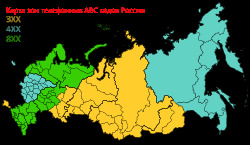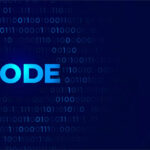The 485 phone code is a confusing one because it is not an officially recognized geographic Area Code within the North American Numbering Plan (NANP), nor is it a dedicated international country calling code. If you receive a call from a number starting with 485, it is most likely a number being used by Voice over Internet Protocol (VoIP) services or, in some cases, an indicator within a specific country’s mobile network.
This article clears up the mystery of the 485 phone code, explains the various contexts in which it appears, and provides actionable advice on how to handle calls from this unassigned code.

What the 485 Phone Code Is NOT
To understand the origin of the number, it is crucial to first rule out its common misconceptions:
- Not a U.S. or North American Area Code
The 485 phone code is not currently assigned to any specific state, city, or numbering plan area (NPA) in the United States, Canada, or any other NANP country. Any reverse lookup claiming 485 is a geographic area code is incorrect or referencing a non-existent or proposed future code.
- Not a Standalone Country Calling Code
International country calling codes (used after the exit code, e.g., 011 from the U.S.) are generally 1 to 3 digits. There is no international country calling code that is 485. Codes that begin with ’48’ are often followed by additional digits (e.g., country code 48 is for Poland).
The True Origin of the 485 Phone Code
The number 485 appears in three primary contexts, none of which define it as a traditional geographic area code.
- International Mobile or Area Prefix (Belgium and Africa)
In several countries, a number sequence like 485 is used as a prefix to indicate a specific geographic area or, more commonly, a mobile service provider within a larger country code.
- Belgium: The country code for Belgium is 32. Within the Belgian mobile network, numbers beginning with 048 (e.g., 0485, 0486) are sometimes associated with the mobile operator Base. When dialing internationally, the full number would be structured as +32 48x xxxxxxx.
- Other Countries: Some international dialing lists (rate decks) mention 485 as a possible mobile carrier code for countries like Angola or prefixes within countries like Gabon, but these are only parts of the full international dialing code, not the primary area code.
- VoIP and Telecommunications Routing
The most common reason people encounter calls starting with 485 in North America is due to unassigned or non-geographic number routing.
- Non-Geographic Code: The 485 code may be reserved for future use or assigned to a non-geographic service (like personal 800-number services) that doesn’t correspond to a fixed location.
- VoIP Spam and Scams: Because 485 is not tied to a fixed location, it is easily exploited by scammers using VoIP technology. VoIP allows the sender to choose virtually any number to display as the Caller ID, and using an unassigned or ambiguous code like 485 makes the source hard to trace.
- Barcode Country Code Context (Armenia)
The sequence 485 is recognized in a completely different context: as a GS1 prefix (the first few digits of a barcode) used to identify the country of origin for consumer products.
- Barcode Prefix: 485 is the barcode prefix used for products originating from Armenia. This is unrelated to telephone calling but contributes to the general confusion surrounding the number.
Security Risks and Actionable Advice
Since the 485 phone code is unassigned in North America and often associated with obscure prefixes internationally, treat any unsolicited call from this number with caution.
- Do Not Trust the Caller ID
If your phone shows a call from (485) XXX-XXXX, recognize that the code is not verifiable. The caller is likely attempting to spoof a number to appear as a domestic or nearby call, a technique commonly used in spam and phishing campaigns.
- Hang Up on Unsolicited Calls
If you do not recognize the number and the person calling asks for sensitive information (account numbers, Social Security details, passwords), hang up immediately. Do not confirm personal information or respond to pressure tactics.
- Use Call Blocking Tools
Many smartphones and wireless carriers (Verizon Scam Shield, T-Mobile Scam Block, AT&T Call Protect) offer free or paid tools to detect and block suspicious, spoofed, or non-geographic calls. If the number continues to call, use your phone’s built-in settings to block the number manually.
Frequently Asked Questions (FAQ)
Should I call back a missed call from the 485 phone code?
It is generally advisable not to call back any number you don’t recognize, especially one with an unassigned or ambiguous code like 485. Calling back could result in connecting to a scammer or, in rare cases, a high-rate international number if the call originated overseas and was masked.
Is the 485 phone code going to be assigned to a U.S. state soon?
While U.S. area codes are constantly being created (known as overlays), the assignment of 485 has been discussed but no official date or location has been announced. The status remains unassigned within the NANP.
How do I check if a call from 485 is really from Belgium?
If you receive a full 10-digit number (e.g., +32 485 XXX XXXX), the number is registered to the Belgian mobile operator Base. However, if the Caller ID only shows (485) XXX-XXXX on a U.S. mobile, it is being treated as a domestic call, which is a key indicator of number spoofing and should be treated as suspicious.
Conclusion
The 485 phone code is a digital enigma; it is not a valid U.S. area code nor an international country code. The most common reason you encounter it is due to VoIP spoofing or its use as a mobile prefix in certain European or African countries. When dealing with an unknown 485 number, rely on the facts: assume the number is spoofed, prioritize security, and use your phone’s blocking features to maintain your digital safety.


